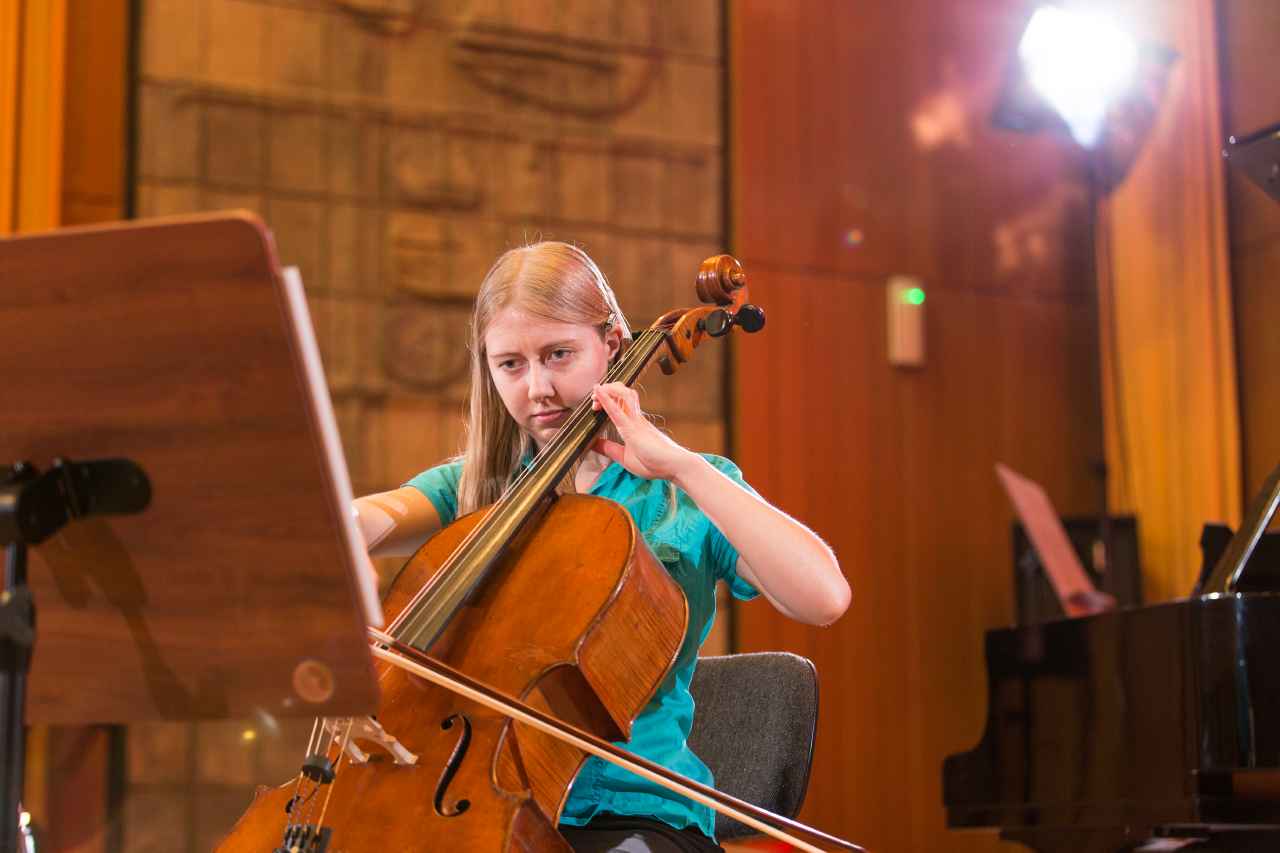MED-EL
Published Apr 22, 2016
Playing and Listening to Music with a Cochlear Implant

Lots of rehabilitation exercises focus on developing language, speaking, and listening skills. These are all important skills for spoken communication, but there’s more that can be done with sound and rehabilitation.
Engaging with music or playing an instrument adds more. It partially builds on some of the skills taught in rehabilitation—like understanding pitch, loudness, and lengths of time—and also helps develop other skills. Here are some of the ways that exposure to music or playing an instrument helps cochlear implant recipients:
Music Builds Listening Skills
Music is all about sound, and exposure to sound helps to build listening skills. Building listening skills with music can be done with all sorts of musical activities. Singing songs, listening to recorded music, or playing a musical instrument are all different ways to build your listening skills.
When we listen to music, we teach our brain to attend to and identify the different sound aspects in the music: for example, the words that are being sung, the song’s tune or melody, or how an instrument changes its pitch. Music builds sequencing skills too: because a piece of music is played in a specific order, with repetition it helps us to predict what will happen next in the musical piece. And, for children learning language and developing their cognitive skills, this sequencing can help them to develop an understanding of concepts like “before,” “during,” and “after.”
Music Builds Social Skills
Even more than that, music can help to build developmental and social skills. Listening to and talking about music with others promotes communication and cognitive thinking skills.
And participating in musical groups like a band or orchestra builds social and emotional skills—making friends and interacting with other people. For children, playing together in a musical group can help teach them to share, take turns and cooperate with others. The very act of playing an instrument, or performing actions through songs, can also bring together different senses like seeing, touching, and hearing, while building motor skills and hand-eye coordination.
Picking Music to Listen to, or an Instrument
When you’re choosing music to listen to, go with your personal preferences.
For adult cochlear implant recipients, choose music that you enjoy. There may be particular songs or pieces that you find easier to listen to, like those with an easy beat or with lyrics that you already know. It’s a good idea to start with these before moving to more complex musical pieces, like symphonies.
If you’re helping your child listen to music, choose songs that are typical for their age range. And remember, repetition is very helpful for developing listening and language skills, so don’t be afraid to sing or play the same songs over and over. The most important part is that you and your child enjoy music that you’re listening to, so move your body, act along with the beat or words, and bring the song to life!
Now if you’re thinking to start playing an instrument, the question is: which one?
When you’re choosing what instrument you want to play, the biggest consideration again is what interests you. Do you like the sounds of brass instruments like the trumpet? Or the smooth jazzy feel of a saxophone? Maybe the range of harmonies that comes from a piano? There’s no wrong instrument to play, and MED-EL recipients play all sorts of different instruments. So, just pick the one that interests you most—and give yourself time to practice and learn. In short, stick with it!
If you don’t have a preference, a good place to start can be with the piano or keyboard. That’s because it’s really straightforward: you press a key, and you get a single and specific note.
Tips for Playing Music
Once you’ve started listening to music or playing an instrument, what’s the best way to practice? Here are some tips:
- Practice every day. The more you practice, the more positive experiences you can have.
- Choose music you enjoy. Other people might suggest specific music, but there’s no reason to keep playing a song if it doesn’t make you happy.
- Watch other people perform music, and listen to music in situations that you enjoy. Go to concerts, or watch performances online.
Want to do more with music? Check out these related blog posts:
- Learn more about how to listen to music with a cochlear implant
- Read the musical journey of Eva, a MED-EL cochlear implant recipient
- Pick the right assistive listening devices for music listening
- Kickstart your child’s development by using musical sounds
This post was written with help from Janani Jeyaraman, a rehabilitation specialist at MED-EL.
Subscribe to the MED-EL blog for more hands-on tips for music, rehabilitation, and more!
MED-EL
Was this article helpful?
Thanks for your feedback.
Sign up for newsletter below for more.
Thanks for your feedback.
Please leave your message below.
Thanks for your message. We will reply as soon as possible.
Send us a message
Field is required
John Doe
Field is required
name@mail.com
Field is required
What do you think?
MED-EL


